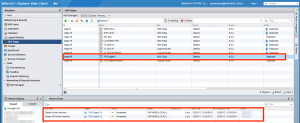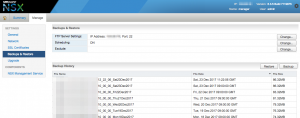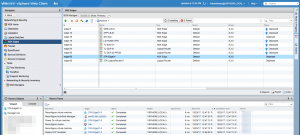NSX Manager has a backup and restore functionality. That process creates a backup of the entire NSX fabric and puts that backup on a remote (s)FTP server. All configuration is available within that backup, the Edge configuration is not separate. Being a good IT-citizen, of course the backup is one of the configurations you do during the installation, so you always have a backup available.
I have a couple points for this post:
- You can restore a NSX Manager backup non-disruptively (*),
- When you restore a NSX Manager backup, existing NSX Edges are not effected and continue to operate,
- If you happen to remove a NSX Edge by accident (let's say your cat got ahold of your mouse), you can restore it using the NSX Manager backups.
(* Tested in a static environment where just a couple changes)
My cat somehow deleted one of my NSX Edges and I was unsure what configuration the Edge had and vRealize Network Insight wasn't running (otherwise I could check vRNI for the configuration history), so I couldn't restore it manually. Instead of thinking real hard and reverse engineering the Edge configuration, I decided to just restore a backup of my NSX Manager. Here's what happened:
Whenever you delete an Edge, the config is gone. There is no history log for Edges like there is for the Distributed Firewall. So, turn to the backups the NSX Manager has made automatically:
Restore Backup
Select the backup record that was created before the event that caused you to want to restore a backup, and hit restore.
Disclaimer: I wouldn't recommend doing this in a production environment; always do it in a test environment. This was my home lab, it didn't matter if I needed to rebuild it. This overwrites all changes done from the backup time up until the current time. Know what has changed in the mean time and don't make a bigger mess.
The restore of the NSX Manager is going to cause the appliance to reboot. Wait until that's done and the appliance is back and the NSX Management Service is running again. After it has returned, you'll see that the deleted NSX Edge is back (and NSX even thinks it's deployed, but we know better).
Redeploy the Edge
Right click on the Edge you want to restore and click Redeploy. That will trigger NSX Manager to deploy a new Edge OVA, insert the configuration and restore your Edge.
Notice how this did not upset any of your other Edges. As long as the vCenter connection and Edge VM IDs remain the same, you won't have to schedule downtime for the remaining Edges. They can just keep on chugging a long.




Leave a Reply